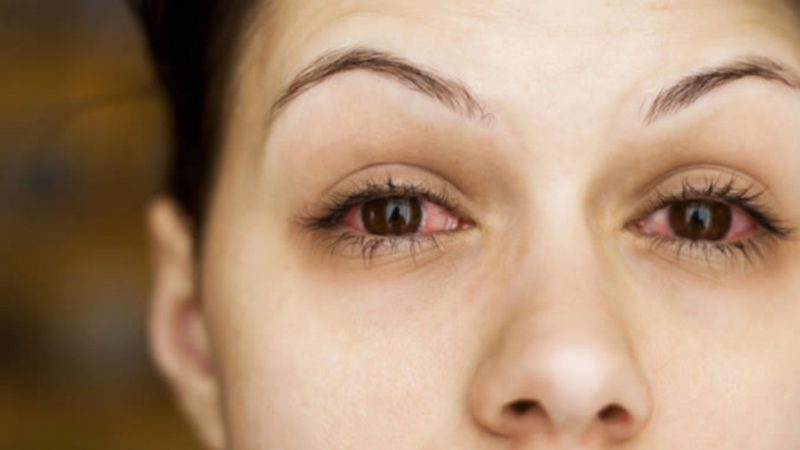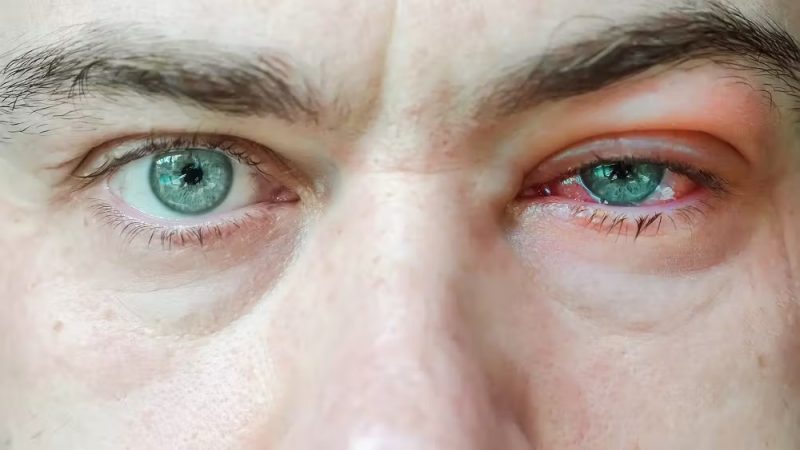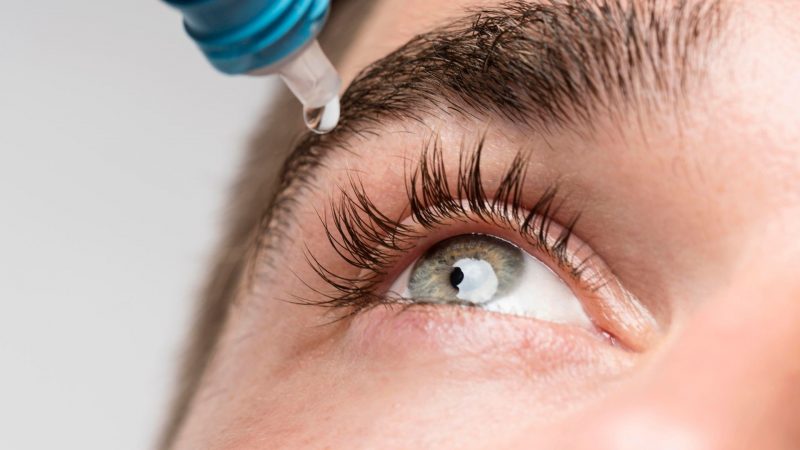The monsoon season is commonly referred to as the flu season of the year because the shift in temperature and humidity is supposed to promote the growth of infection-causing bacteria every year. Taking appropriate steps to enhance living circumstances is thus an essential step in sustaining health and cleanliness. It is important to take some extra preventive measures while enjoying the beautiful season in order to reduce the danger of bacterial infections, water-borne illnesses, and even eye infections.
People nowadays are frequently suffering from redness, itching, or irritation in their eyes. If you are having similar symptoms, you might have eye flu. Every year, millions of individuals are affected with eye flu, which is very common. It is caused by numerous viruses and is also known as viral conjunctivitis. The condition’s symptoms might be moderate or severe, and it can even cause eyesight loss.
In the past few days, there have been severe rains, waterlogging, and flooding in the national capital in recent days which resulted in an unexpected epidemic of eye flu spread or conjunctivitis. After the flood levels increased, several cases of pink eye or eye flue or conjunctivitis were recorded from areas located near the banks of the Yamuna River.
What Is Eye Flu?

Conjunctivitis, often known as eye flu or pink eye, is a viral infection that affects the eyes. The condition is caused by an infection of the conjunctiva, or the transparent membrane of the eye, which causes it to look pink. It can be caused by viruses, bacteria, or allergies, and symptoms include redness, itching, and excessive tearing. Though eye flu does not pose a serious health risk, it is extremely infectious and can spread quickly in crowded locations or via direct contact with sick people.
Reasons For Eye Flu

Non-infectious conjunctivitis is typically caused by allergies and irritants such as smoke, dust, pollen, pet dander, and chemicals. It can also be caused by using contact lenses for an extended period of time or not cleaning them correctly.
If their mother has a sexually transmitted infection such as chlamydia or gonorrhea, newborns may also suffer from ocular flu at delivery. To avoid significant difficulties, the newborn may require quick medical attention for further serious complications.
Chronic cases of conjunctivitis have also been related to autoimmune illnesses and underlying health issues such as rosacea and Kawasaki disease.
Eye Flu Symptoms
The symptoms of conjunctivitis or eye flu differ based on the underlying causes. Below we have mentioned the most prevalent eye flu symptoms are:
- The conjunctiva becomes pink or crimson.
- Itching and irritability of the eyes
- Excessive tearing or a release of water
- Crusts around the eyes due to thick, yellow, or greenish discharge
- Vision blurred as a result of severe tearing and discharge
- In the eyes, there is a grittier or sandy sensation.
- The eyes become more sensitive to light (photophobia).
- Eyelids become swollen or puffy
Tips For Eye Flu Prevention During Monsoon

- Avoid touching your eyes frequently. Germs and germs from many surfaces can infect the eyes through hand contact.
- Maintain appropriate hand hygiene by cleaning your hands and lenses before putting them on. On a windy rainy day, use sunglasses to protect your eyes from dusty particles.
- Separate your facial and body towels.
- When sweating in humid conditions, try to use clean handkerchiefs or carefully stored wipes around the eyes.
- Only use eye lubricant after getting an appropriate prescription from a doctor.
- Avoid waterlogged areas to stay clear off viruses and bacteria.
- Avoid immediately splashing your eyes with clean water. There might be some irritants.
- To reduce the risk of infection, avoid wearing cosmetics. Humidity and moisture in the air can promote the spread of germs.
Eye Flu Treatment

- Determine the cause: Viruses, bacteria, and allergies can all cause eye flu. A proper diagnosis by a healthcare professional will aid in determining the underlying cause and guiding the treatment plan.
- Artificial Tears: Artificial tears or lubricating eye drops can help relieve pain and keep the eyes moist.
- Cold Compression: A cold compress placed over closed eyelids might help decrease inflammation and improve discomfort.
- Hygiene: Maintain proper hygiene to avoid spreading the virus. Regularly wash your hands, avoid touching or rubbing your eyes, and avoid sharing personal objects like as towels or eye makeup.
- Avoid using contact lenses: If you wear contact lenses, it’s best to avoid using them while you have eye flu since they might aggravate the disease and raise the chance of complications.
- Rest: Allow your body to heal by getting adequate rest.
- Avoid Irritants: Avoid smoking, dust, and other irritants that might exacerbate eye flu symptoms.
A correct diagnosis and personalized treatment plan require the consultation of a healthcare specialist, such as an eye doctor or general physician. They can offer the best advice based on the exact cause and severity of the eye flu.
Foods to Boost Eye Health

A healthy diet is essential for sustaining the health of many body components. Foods high in vitamin C, antioxidants, minerals, iron, and anti-inflammatory qualities are excellent for eye health. Here are a few foods to include in your daily diet to keep your eyes healthy during the monsoon.
- Carrots
- Amla
- Red peppers
- Almonds
- Leafy greens
- Fish
- Eggs
- Tomatoes
- Nuts and seeds
- Citrus-rich fruits and foods
Eye Flu Duration
Most cases of eye flu cases are mild. The eye flu typically resolves on its own within 1-2 weeks.
Common Myth: Does Eye Flu Spread By Looking?

No, looking at someone with eye flu, pink eye or conjunctivitis does not spread it. Conjunctivitis is primarily caused by viruses or bacteria, and it is transmitted by direct contact with infected eye discharge, respiratory droplets from coughing or sneezing, or by touching surfaces contaminated with the virus or bacteria and then contacting your eyes.
To avoid spreading or contracting eye flu, practice good hygiene by frequently washing your hands, avoiding touching your eyes with unwashed hands, not sharing personal items such as towels or pillows, and avoiding close contact with people who have conjunctivitis until they are fully recovered. If you feel you have eye flu, get medical attention for proper diagnosis and treatment.




